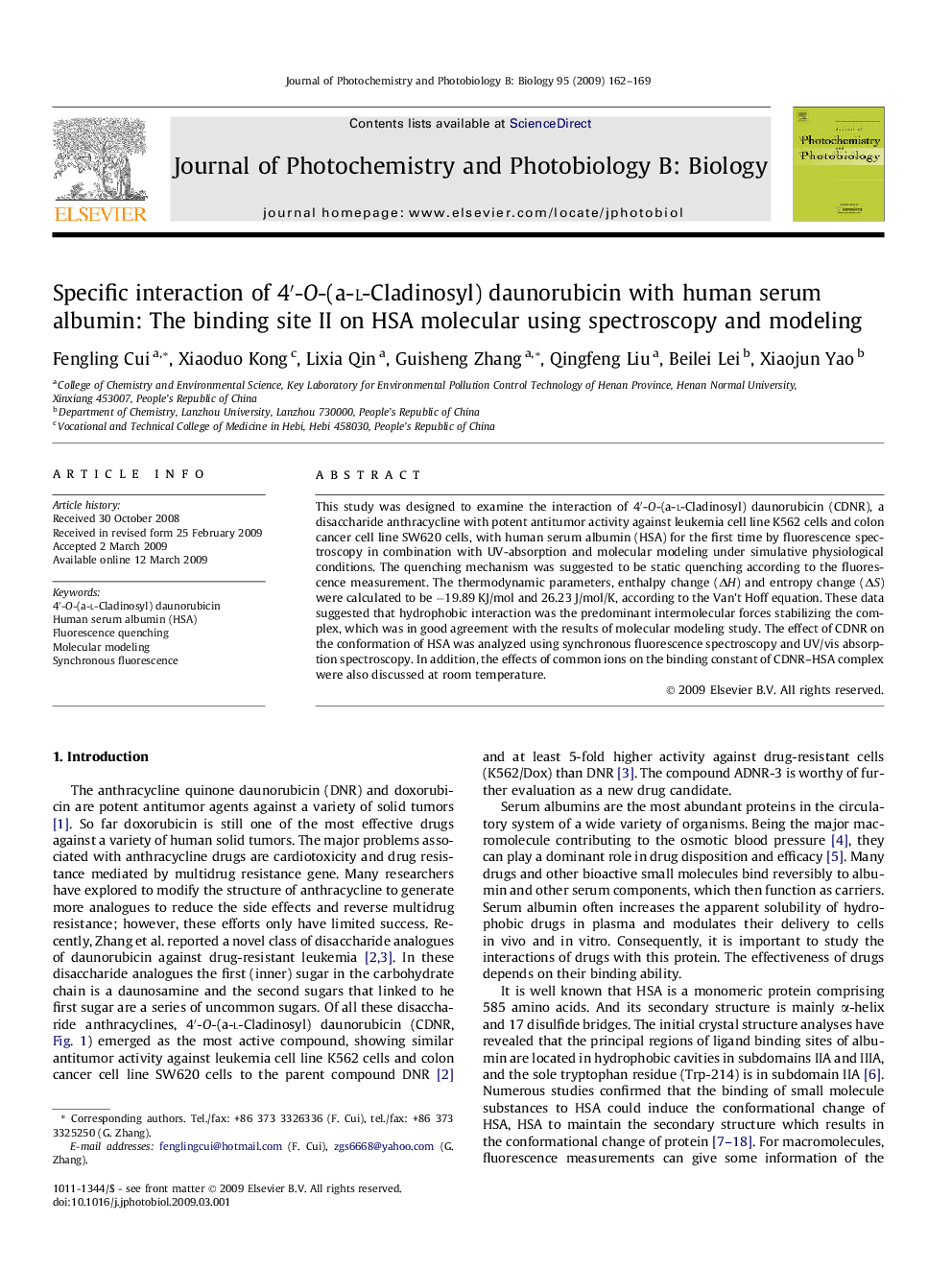| Article ID | Journal | Published Year | Pages | File Type |
|---|---|---|---|---|
| 29973 | Journal of Photochemistry and Photobiology B: Biology | 2009 | 8 Pages |
This study was designed to examine the interaction of 4′-O-(a-l-Cladinosyl) daunorubicin (CDNR), a disaccharide anthracycline with potent antitumor activity against leukemia cell line K562 cells and colon cancer cell line SW620 cells, with human serum albumin (HSA) for the first time by fluorescence spectroscopy in combination with UV-absorption and molecular modeling under simulative physiological conditions. The quenching mechanism was suggested to be static quenching according to the fluorescence measurement. The thermodynamic parameters, enthalpy change (ΔH) and entropy change (ΔS) were calculated to be −19.89 KJ/mol and 26.23 J/mol/K, according to the Van’t Hoff equation. These data suggested that hydrophobic interaction was the predominant intermolecular forces stabilizing the complex, which was in good agreement with the results of molecular modeling study. The effect of CDNR on the conformation of HSA was analyzed using synchronous fluorescence spectroscopy and UV/vis absorption spectroscopy. In addition, the effects of common ions on the binding constant of CDNR–HSA complex were also discussed at room temperature.
